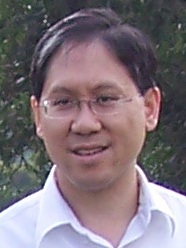|
 |
 |
|

Technical
Seminar
Distinguished Lecturer Series |
 |
 |
|
|
|
Integrated Micromechanical Circuits for RF
Front-Ends |
|
|
DATE/TIME
Friday, November 30, 2007 (10:00am to 11:30am)
NOTE MORNING TIME |
|
PLACE
AMD Fort Collins Campus (Fort
Collins, CO)
|
|
DIRECTIONS
|
|
From I-25, take Harmony Road Exit (Exit 265) westbound, and enter AMD
campus on right immediately following Harmony/Ziegler intersection.
AMD is located on the NW corner of Harmony Road and Ziegler Road.
Proceed to 3rd floor for escort to seminar auditorium. Non-AMD
employees: please arrive at 9:45am for security sign-in and escort. |
|
COST
Free. As always, food &
drinks will be provided. |
|
RSVP
Send e-mail to Tin Tin Wee at
tintin.wee@amd.com. |
|
|
ABSTRACT |
|
Recent advances in vibrating RF MEMS technology that yield on-chip
resonators with Q’s over 10,000 at GHz frequencies and excellent thermal
and aging stability, have now positioned vibrating micromechanical
devices as strong candidates for inclusion into a number of future
wireless communication sub-systems, from cellular handsets, to PDA’s, to
low-power networked sensors, to ultra-sensitive radar and jam-resistant
communicators designed for hostile environments. Indeed, early start-ups
have already sprouted to take advantage of this technology for
timekeeper applications, and the timing of this technology seems well
placed for wireless markets, whose requirement for multi-mode
reconfigurability fuels a need for on-chip high-Q resonators to prevent
the cost of the front-end passives in a typical handset from obviating
that of the IC’s. But the benefits of vibrating RF MEMS technology go
far beyond mere component replacement. In fact, the extent of the
performance and economic benefits afforded by vibrating RF MEMS devices
grows exponentially as researchers begin to perceive them more as
building blocks than as stand-alone devices. In particular, when
integrated into micromechanical circuits, in which vibrating mechanical
links are connected into larger, more general networks, previously
unachievable signal processing functions become possible, such as
reconfigurable RF channel-selecting filter banks, ultra-stable
reconfigurable oscillators, frequency domain computers, and frequency
translators. When further integrated together with other micro-scale
devices (e.g., transistors, micro-ovens, micro-coolers, atomic cells),
system level benefits for portable applications abound, particularly
those for which architectural changes allow a designer to trade high Q
for lower power consumption and greater robustness, with potentially
revolutionary impact. This presentation describes the MEMS technologies
and attributes most suitable to enabling such an integrated
micromechanical circuit technology. |
|
PRESENTATION SLIDES
pdf |
|
|
PROF.
CLARK NGUYEN (University of
California, Berkeley, CA)
|
 |
Prof. Clark T.-C. Nguyen received the BS, MS, and PhD degrees from the University of California at Berkeley
in 1989, 1991, and 1994, respectively, all in Electrical Engineering and
Computer Sciences. In 1995, he joined the faculty of the University of
Michigan, Ann Arbor, where he was a Professor in the Department of
Electrical Engineering and Computer Science up until mid-2006. In 2006,
he joined the Department of Electrical Engineering and Computer Sciences
at the University of California at Berkeley, where he is presently a
Professor and a Co-Director of the Berkeley Sensor & Actuator Center.
His research interests focus upon micro electromechanical systems (MEMS)
and include integrated micromechanical signal processors and sensors,
merged circuit/ micromechanical technologies, RF communication
architectures, and integrated circuit design and technology. |
|
In 2001, Prof. Nguyen founded Discera, Inc.,
the first company aimed at commercializing communication products based
upon MEMS technology, with an initial focus on the very vibrating
micromechanical resonators pioneered by his research in past years. He
served as Vice President and Chief Technology Officer (CTO) of Discera
until mid-2002, at which point he joined the Defense Advanced Research
Projects Agency (DARPA) on an IPA, where he served for three-and-a-half
years as the Program Manager for 10 different MEMS-centric programs in
the Microsystems Technology Office of DARPA. |
|
Website |
|
|
|
|